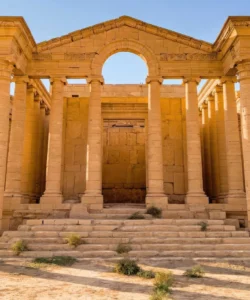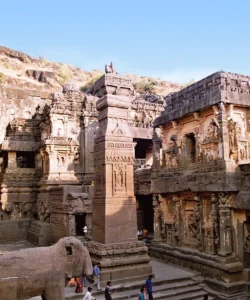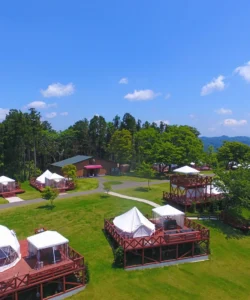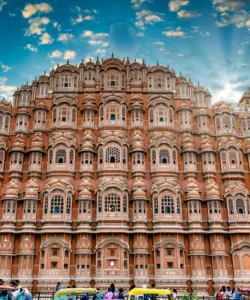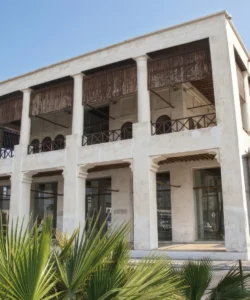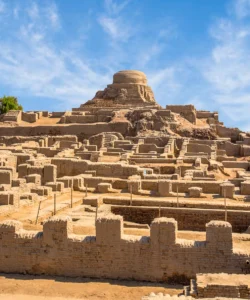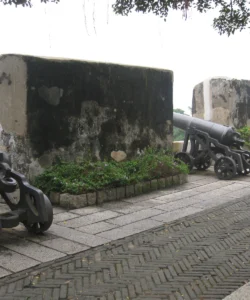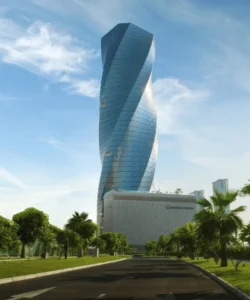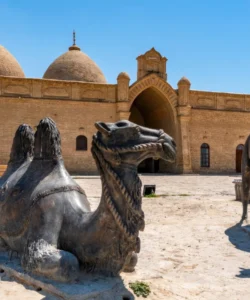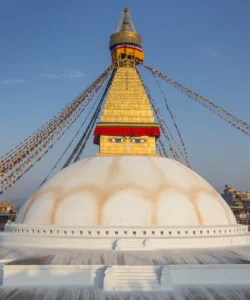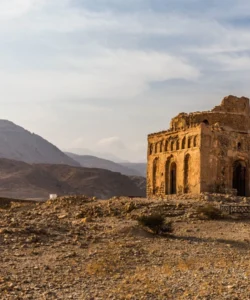Wat Arun Ratchawararam Ratchaworamahawihan, more commonly known as Wat Arun (วัดอรุณ), or the “Temple of Dawn,” is one of Bangkok’s most iconic and visually stunning Buddhist temples. Located on the west bank (Thonburi side) of the Chao Phraya River, its distinctive silhouette, adorned with colorful porcelain, stands majestically over the water, making it a beloved symbol of the city, especially at sunrise and sunset.
![]()
Name: Wat Arun Ratchawararam Ratchaworamahawihan (วัดอรุณราชวรารามราชวรมหาวิหาร). Commonly known as Wat Arun (วัดอรุณ). It is nicknamed the “Temple of Dawn.”
Address: 158 Thanon Wang Doem, Wat Arun, Bangkok Yai, Bangkok 10600, Thailand. It is situated directly opposite Wat Pho and the Grand Palace on the Chao Phraya River.
How to get there:
Wat Arun is easily accessible via the Chao Phraya River, which offers a scenic approach:
- From Bangkok, Thailand:
- From Bangkok Airport to City Center: Take the Airport Rail Link or a taxi from Suvarnabhumi Airport to central Bangkok (e.g., to an MRT or BTS station). From Don Mueang, a taxi or airport bus will take you to the city.
- From Central Bangkok to Wat Arun (Recommended – River Route):
- Take the BTS Skytrain to Saphan Taksin Station (S6, Exit 2).
- Head to Sathorn Pier (Central Pier), which is right below the BTS station.
- Take a Chao Phraya Express Boat (Orange Flag boat is generally recommended for tourists, costs around 15 baht) to Tha Tien Pier (N8). The boat ride offers scenic views of the river.
- From Tha Tien Pier, you’ll see Wat Arun directly across the river. Take a small shuttle ferry across to Wat Arun pier. This short cross-river ferry usually costs around 4-5 baht.
- Other options within Bangkok:
- By Taxi/Tuk-Tuk: Taxis and tuk-tuks are available throughout Bangkok. Specify “Wat Arun” (or “Wat Chaeng”). Be sure to insist on a meter for taxis or agree on a price for tuk-tuks beforehand.
Operating Hours and Entrance Fee:
- Operating Hours: Wat Arun is generally open daily from 8:00 AM to 6:00 PM (some sources say 8:30 AM to 5:30 PM). It’s particularly popular during sunrise and sunset for photography.
- Entrance Fee: For foreign tourists, the entrance fee is typically 200 THB per person. Thai nationals can enter for free.
Landscape and Architecture:
Wat Arun’s architecture is unique among Thai temples, known for its distinct Khmer-style prangs and intricate porcelain decoration:
- Central Prang (Khmer-style Tower): The most iconic feature is the towering central prang, or spire, which stands over 70 meters (230 feet) high. Its design is reminiscent of Khmer architecture (similar to Angkor Wat) and symbolizes Mount Meru, the center of the universe in Buddhist and Hindu cosmology.
- Porcelain Mosaic Decoration: The entire central prang and its four smaller surrounding prangs are exquisitely decorated with millions of tiny, colorful pieces of Chinese porcelain and seashells, carefully arranged into intricate floral and geometric patterns. These reflective pieces shimmer in the sunlight, giving the temple its distinctive glittering appearance. This unique use of porcelain as decorative ballast from old trade ships is a hallmark of its construction, particularly during King Rama III’s reign.
- Steep Steps: Visitors can climb the central prang via a series of very steep steps, which offer breathtaking panoramic views of the Chao Phraya River, the Grand Palace, Wat Pho, and the Bangkok skyline from various levels.
- Four Satellite Prangs: Four smaller, elegant prangs surround the central one, representing the four directions, each dedicated to the wind god, Phra Phai.
- Ordination Hall (Ubosot): Beyond the prangs, there’s an ordination hall with a beautiful golden Buddha image and detailed murals, where monks conduct daily rites.
- Mythical Guardian Figures: The temple grounds are adorned with impressive statues of mythical giants (Yakshas) and other figures from the Ramakian epic, serving as guardians.
- Riverside Location: Its prominent location directly on the west bank of the Chao Phraya River makes it easily viewable from the water and from the opposing riverbank, especially when lit up at night.
- Chinese Pavilions: Six Chinese-style pavilions made of green granite with landing bridges line the riverside, adding to the architectural diversity.
What makes it famous:
Wat Arun is famous for:
- Distinctive Riverside Silhouette: Its towering, uniquely decorated prangs form one of the most recognizable and photographed landmarks of Bangkok, especially when viewed from across the Chao Phraya River.
- “Temple of Dawn” Nickname and Views: Although often called the “Temple of Dawn,” it is equally (if not more) spectacular at sunset, when its porcelain shines in the golden light, and when it is magnificently illuminated at night.
- Unique Porcelain Mosaic Decoration: The intricate and colorful decoration made from broken porcelain and seashells is a signature artistic style, making it visually unlike any other temple in Thailand.
- Panoramic Views from the Prang: Climbing the steep steps of the central prang rewards visitors with unparalleled views of the river, the cityscape, and the nearby Grand Palace and Wat Pho.
- Khmer Architectural Influence: Its distinctive prang design, a departure from the typical Thai stupa, shows a clear influence from ancient Khmer architecture, highlighting historical connections.
- Spiritual Significance: While Wat Phra Kaeo holds the Emerald Buddha, Wat Arun also served as a royal temple and briefly housed the Emerald Buddha before it was moved to the Grand Palace. It remains an active and important place of worship.
Differences from some other wonders:
Wat Arun distinguishes itself from other temples and architectural wonders, particularly other Thai temples, in several key ways:
- Dominant Central Prang: While many Thai temples feature chedis (stupas), Wat Arun’s single, massive, Khmer-style prang as its central, towering feature is highly distinct. This contrasts with the multiple chedis of various sizes found at temples like Wat Pho or the more concentrated structures of Wat Phra Kaeo.
- Porcelain and Shell Mosaics: Its most unique decorative aspect is the extensive use of colorful, glazed Chinese porcelain shards and seashells embedded into its surfaces. This “mosaic” style gives it a glittering, jewel-like appearance that is fundamentally different from the predominantly gold leaf, stucco, or mirrored glass decorations found in most other major Thai temples.
- Riverside Location and Visual Impact: Its prominent location directly on the Chao Phraya River’s west bank provides it with an unparalleled visual impact from the water and opposite bank, especially at dawn and dusk. Many other famous temples are inland or within larger complexes, making Wat Arun’s direct relationship with the river a signature characteristic.
- Climbable Main Structure: The ability for visitors to climb a significant portion of the main prang and gain elevated views from its terraces is an interactive experience not offered by the central structures of many other major temples.
- Color Palette: While gold is ubiquitous in Thai temples, Wat Arun’s reliance on vibrant colors from its porcelain (blues, greens, reds, whites) gives it a distinct and less monochromatic aesthetic compared to the overwhelming gold of Wat Phra Kaeo.
In essence, Wat Arun is a truly unique and breathtaking wonder, a testament to Thai artistry and devotion that stands as a shimmering beacon on the Chao Phraya, captivating all who witness its distinctive beauty, especially as the sun rises or sets.

